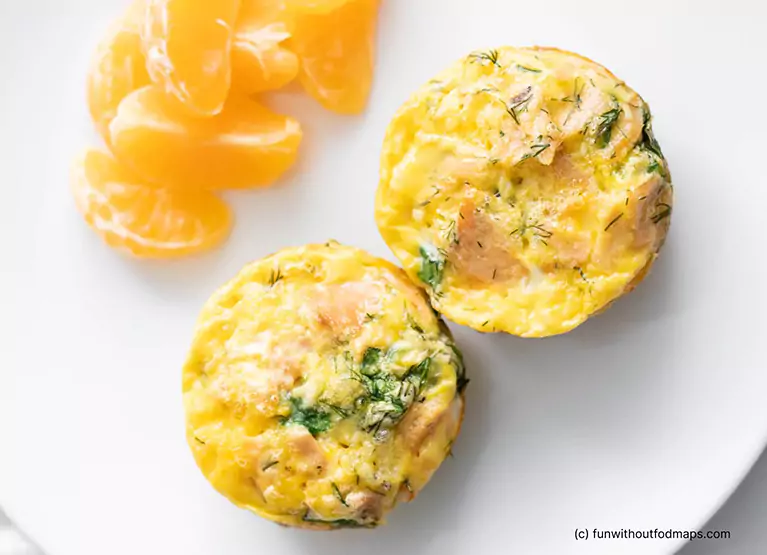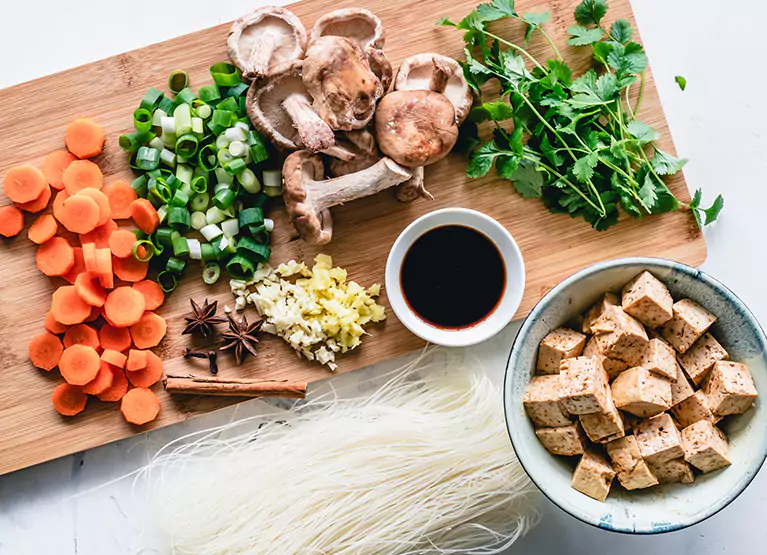Delicious Low FODMAP Recipes to Try

Key Takeways
Research shows that somewhere around 20 percent of the global population suffers from irritable bowel syndrome (IBS).
As scientists continue to study the cause of this condition, the low FODMAP diet is one option that’s shown to be effective for managing chronic gastrointestinal (GI) conditions. Though it may not be suitable for everyone, this diet is often temporarily used to identify foods that can lead to IBS symptoms.
In this article, Nutrisense dietitian Heather Davis, MS, RDN, LDN, shares her top tips, resources, and low-FODMAP friendly recipes to help you on your low FODMAP journey and guide you towards success.
Let’s recap the benefits of the low FODMAP diet for beginners and get into some of the delicious recipes you can try while still sticking to your diet plan.
A Recap of the Low FODMAP Diet

The low FODMAP diet is a way of eating that restricts FODMAPS, or fermentable oligosaccharides, disaccharides, monosaccharides, and polyols in the diet.
Limiting these foods, all of which are types of carbohydrates, has been found to be beneficial in managing digestive symptoms linked to irritable bowel syndrome (IBS) and other gastrointestinal conditions.
In our fiber deep dive, we discussed the beneficial effect that fermentable fibers (such as oligosaccharides) can have on gut health. However, while FODMAPs can be healthy, they can also aggravate IBS symptoms and lead to things like bloating and abdominal discomfort in some people.
The elimination phase of the low FODMAP diet is typically recommended for no more than two to six weeks, and should be monitored by a doctor, dietitian, or nutritionist to help you determine which foods are triggering your symptoms.
High and Low FODMAP Foods
Low FODMAP foods include things like quinoa, raspberries, sweet potatoes, peanuts, rice, meats, tofu, eggs, feta cheese, zucchini, and lettuce.
High FODMAP foods, which should be avoided on this diet, include lentils, yogurt, cow’s milk, onion, chickpeas, cauliflower, apples, watermelon, and honey, among many others.
To make sure you’re sticking to an effective low FODMAP diet, remember to consult with a dietitian or nutritionist and make sure that this diet is safe for you and your health.
Benefits of Low FODMAP

The low FODMAP diet, which was first introduced in 2001, was first created for individuals with the following GI conditions:
- IBS
- Small intestinal bacterial overgrowth (or SIBO)
- Small intestinal fungal overgrowth (SIFO)
- And, in some cases, gut dysbiosis (an imbalance of the gut flora in other or several other parts of the gut, not just the small intestine)
After following this diet for several weeks, individuals with these conditions usually experience improved digestion, reduced bloating and gas, higher energy levels, and overall improvement in GI symptoms and conditions.
Dietitian-Recommended Low FODMAP recipes
Nutrisense dietitian Heather Davis, MS, RDN, LDN, has extensive experience curating meal plans for those who are on the low FODMAP diet or have GI conditions.
Sticking to a restrictive diet can be difficult, so if your doctor or dietitian has recommended that you try the low FODMAP diet to manage your GI symptoms, look no further! From low FODMAP dinner recipes to low FODMAP breakfast ideas, Heather will share some of her favorite, accessible low FODMAP meals to give you a little bit of inspiration.
1) Low FODMAP Salmon and Spinach Frittata Cups by Fun Without FODMAPs

This recipe is a low-carb, protein-packed breakfast idea that also makes for a great mid-afternoon snack. If you want to add some low FODMAP carbs to your meal, try whipping up a bowl of steel-cut oatmeal topped with berries for a touch of sweetness.
Ingredients
- 10 large eggs
- ½ teaspoon lemon zest
- 1 tablespoon lemon juice
- 1 tablespoon minced fresh dill (or 1½ teaspoons dried dill)
- 1 cup packed spinach, chopped
- 4 ounces salmon (leftover baked salmon or canned salmon)
2) Low FODMAP Bacon, Chard, and Potato Hash by Fun Without FODMAPs
This savory meal is great for breakfast, lunch, or dinner and is a great source of all three macronutrients (protein, carbohydrates and fat).
Ingredients
- 3–4 medium Yukon Gold potatoes (about 400 grams), scrubbed well and diced into ½-inch cubes
- 4 slices uncooked lower-sodium bacon
- 2 teaspoons garlic-infused olive oil
- 4 cups loosely packed shredded Swiss chard leaves
- ¼ teaspoon red pepper flakes (optional)
- 4 large eggs (or more)
- Salt and pepper to taste
3) Low FODMAP One-Pan Italian Chicken and Veggies by Rachel Pauls

This one-pan recipe is a great way to boost your daily protein intake and is also convenient to cook in advance for your weekly meal prep. If you want to add a low FODMAP source of carbohydrates to balance the dish, you may try eating this meal over a bowl of quinoa or rice.
Ingredients
- 6 (6 to 8-ounce) boneless, skinless chicken breasts
- 1 teaspoon sea or Kosher salt, divided
- 1/4 cup extra-virgin olive oil
- 1/4 cup balsamic vinegar, (gluten-free)
- 2 teaspoons basic Italian seasoning (thyme, marjoram, oregano, rosemary)
- 1/2 teaspoon black pepper
- 1 pint cherry tomatoes, left whole
- 1 medium zucchini
- 3 medium carrots
- 1/3 cup freshly grated Parmesan cheese (omit for dairy-free version)
- 2 to 3 tablespoons chopped fresh parsley
4) 5-Minute Salmon Salad by Real Food RDs
Salmon is full of omega-3 fatty acids and is also a great source of protein, so tossing this easy salmon salad together is a no-brainer if you’re in need of a quick snack or a light dinner option. To pull it all together, try eating this salad on top of sourdough or gluten-free bread.
Ingredients
- 2 (5-6 ounces) cans of salmon, drained
- 1/3 cup mayonnaise
- 1 medium stalk celery, finely chopped
- 1 Tbsp. fresh dill or 1 tsp. dried dill
- 1/4 tsp. black pepper
- Splash of lemon juice
5) Low FODMAP Instant Pot Lemon Chicken by Good Noms, Honey!

This instant pot dinner is quick and easy to throw together and is a healthy source of protein and fats. Use this for your meal prep to pair with a side of potatoes or rice and you’ll always have a flavorful low FODMAP meal ready on the go.
Ingredients
- 6-8 bone-in, skin-on chicken thighs
- 1 ½ teaspoons salt
- 1 teaspoon dried rosemary or 1 tablespoon fresh rosemary, chopped
- 1 teaspoon dried thyme or 1 tablespoon fresh thyme leaves
- ½ teaspoon ground black pepper
- 2 tablespoons ghee
- 2 tablespoons garlic-infused olive oil
- 1 teaspoon lemon zest
- ⅓ cup lemon juice, freshly-squeezed
- ½ cup chicken bone broth
- ½ cup coconut cream
- 2 teaspoons tapioca flour
- 2 teaspoons cold water
6) Uncured Deli Meat Roll Ups by Heather Davis, MS, RDN, LDN
Deli meat roll ups are one of Heather’s go-to lazy low FODMAP snacks. Using any veggies in the fridge, you can roll deli chicken or turkey with a few sliced veggies and some Dijon mustard for a satiating, high-protein snack that won’t leave you feeling bloated.
Ingredients
- Uncured deli meat
- Dijon mustard
- Cucumber
- Bell pepper
- Avocado
Heather’s Tips For Sticking to the Low FODMAP Diet

1) Keep Low FODMAP Ingredients on Hand
Having recipe ideas is always helpful when trying to stick to a particular diet, but what about snacks? Heather recommends keeping things like peanuts, almonds, walnuts, and berries on hand to snack on during the day.
Herbs and spices like oregano, cinnamon, rosemary, black pepper, parsley, and cumin are all suitable on a low FODMAP diet and will add flavor to your meals.
2) Read Your Food Labels
One of the trickiest things about sticking to a low FODMAP diet is spotting the hidden high FODMAP ingredients that may be lurking in marinades, sauces, dressings, soups, and stews such as garlic, onions, dairy, honey, and gluten.
If you’re dining out and you’re not sure what’s in your dressing or sauce, try getting it on the side of the dish.
Often with FODMAPs, it’s all about the dose! This means that you might do okay with a relatively smaller amount of a higher FODMAP food and it’s easier to control that variable when you opt for it on the side.
3) Buy from Low FODMAP Brands

If you’re feeling overwhelmed with reading all of the ingredients on your condiments at the store, some brands like Fody make this simple. These low FODMAP brands focus exclusively on low FODMAP ingredients in their products, so you can be sure that they’re safe to include.
4) Keep a List of High and Low FODMAP Foods
Don’t be afraid to keep a list of some low and high FODMAP foods handy on your phone or other easily accessible location when you’re out shopping.
Monash University even has an app that can help you with making shopping lists, meals, and more. Using these resources may help you simplify your low FODMAP diet so you can focus on your symptoms.
Find the right Nutrisense programto turn insight into progress.
Go Beyond Glucose Data with Nutrisense
Your glucose can significantly impact how your body feels and functions. That’s why stable levels are an important factor in supporting overall wellbeing. But viewing glucose isn't enough. Nutrisense, you’ll be able to learn how to use your body's data to make informed lifestyle choices that support healthy living.
One-to-one coaching
Sign up to access insurance-covered video calls to work with a glucose expert: a personal registered dietitian or certified nutritionist who will help tailor your lifestyle and diet to your goals.
Monitor and measure what matters
With the Nutrisense CGM Program, you can monitor your glucose with health tech like glucose biosensors and continuous glucose monitor (CGM)s, and analyze the trends over time with the Nutrisense App. This will help you make the most informed choices about the foods you consume and their impact on your health.
Find your best fit
Ready to take the first step? Start with our quiz to find the right Nutrisense program to help you take control.

Heather is a Registered and Licensed Dietitian Nutritionist (RDN, LDN), subject matter expert, and technical writer, with a master's degree in nutrition science from Bastyr University. She has a specialty in neuroendocrinology and has been working in the field of nutrition—including nutrition research, education, medical writing, and clinical integrative and functional nutrition—for over 15 years.




